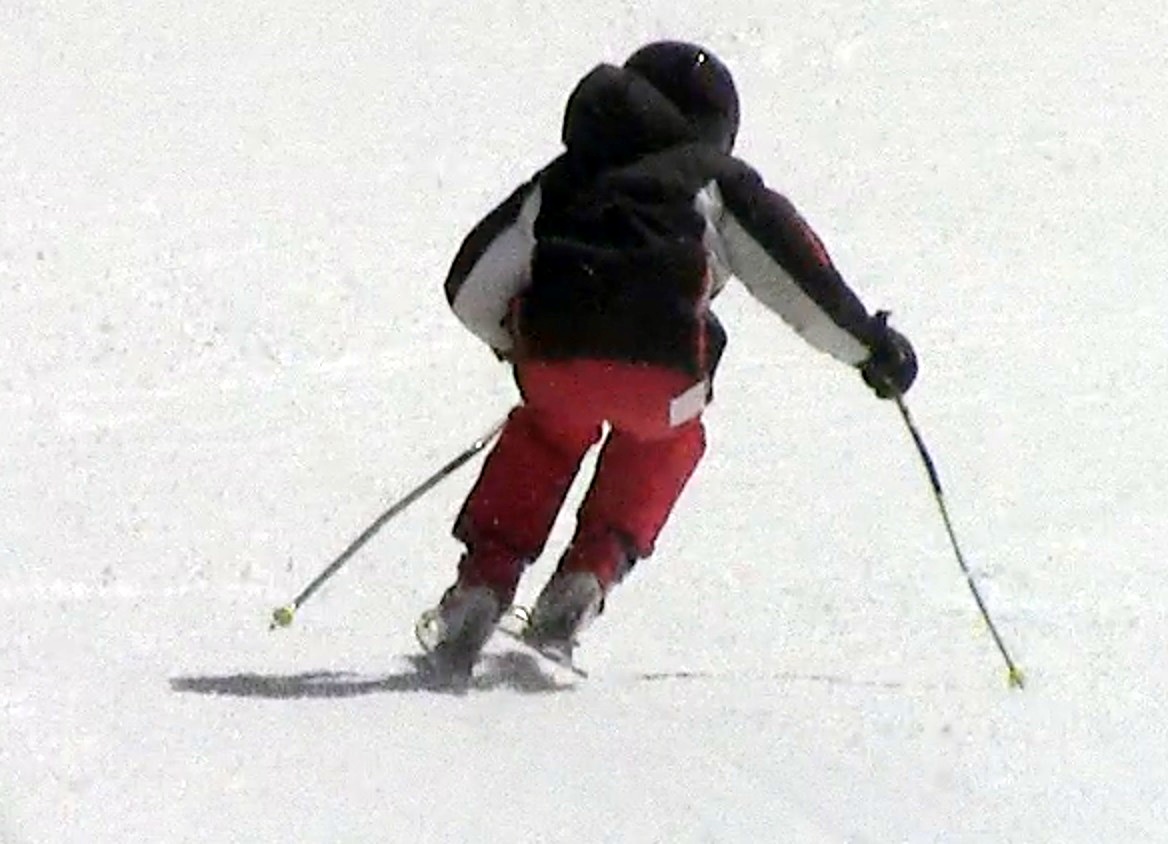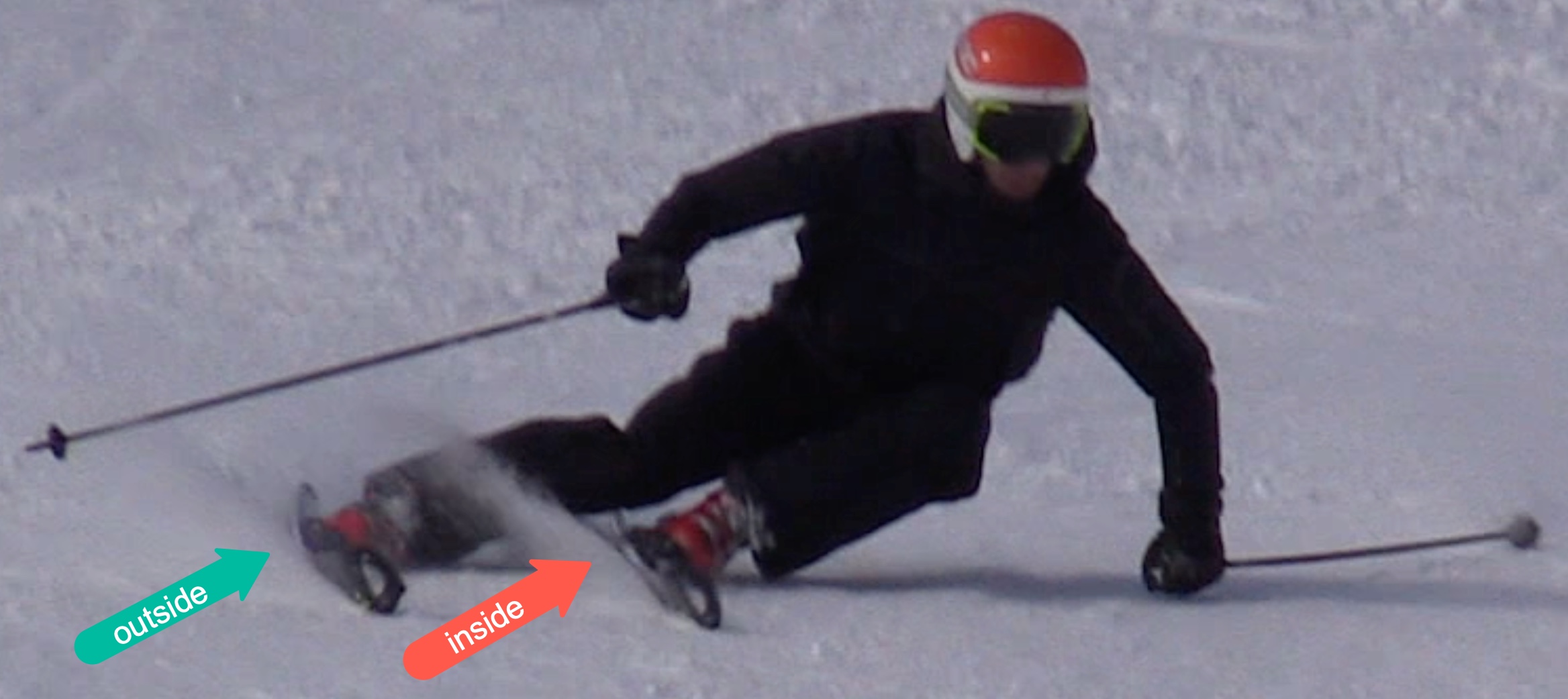Focusing on the Inside Ski
Subscribe
Pub
Share
Here's a more complete review of how important the inside ski is for performance skiing.
What we do with the inside foot is four things... each useful by itself, but in combination, they are fantastic:
- Unweight it
- Hold it back
- Tip it
- Shorten the leg (flex it)
Also, related complementary movements from the inside hip:
- Counterbalancing to create Angulation, by lifting the inside hip
- counteracting to create counter, using a strong inside hip
While there are hints here and there about its importance, there's not a lot of focus on coaching the proper use of the inside leg, foot, and ski... a lot of the good racers do what's needed, but mostly not because they have focused on it, but because of Darwinian-like selection and all sorts of other cues and outcome-based instruction like "keep shins parallel", "tips even", "weight the outside ski" etc.
I think that not focusing sufficient instruction on the inside ski is a costly mistake! To start with, that's 50% of the skis/feet/legs we have to work with and the one with the better range of motion and mobility since it is mostly un-weighted. As your skiing improves, you realize that it is mostly about balancing on the outside ski while managing the inside leg/foot/ski (and other body parts not under load).
Unweight the inside ski
Today almost everybody agrees that the pressure should be mostly on the outside ski, thus the inside ski must be light. You can exaggerate and even lift it off the snow, that's especially good for training. If you instead put weight on the inside ski, the outside ski will not hold as well and the body cannot get inside the turn as easily. In more advanced sessions, we'll talk about Create the turn with flexing and Pull the inside boot up, both important for developing large edge angles.
In fact, if you look at photos of racers over the past few decades, you will notice an exaggerated lifting of the inside ski at the beginning of turns - present in all modern-day high-performance skiing. Can you spot it here in this modern still of Mikaela Shiffrin tearing up a WC GS course?

Foot tipping and tipping the inside boot is a related movement, because by tipping you are also lifting the inside edge off of the snow or lightening it.
Holding the inside boot back
As the angles build on steep pitches, the bio-mechanics at play and the boot geometry will tend to push the inside boot forward anyway, to keep the ankles at the same angle, towards the end of the turn, see tip lead. Thus, keeping the inside boot back and not letting it shuffle ahead too much is perhaps more important than lifting it:
- moves and keeps the hips/weight forward
- frees up the knees, so they can be tipped into the turn
- allows foot tipping from the feet and ankle and avoids "hip dumping"
- enhances proper countering
One cue could be trying to keep the ski tips even, but truly you are just holding the foot back, so it doesn't shuffle too much in front of the outside ski. The main movement to keep the inside boot back and avoid a massive shuffle is Dorsiflexion or "closing the ankle", together with holding the foot back from the hamstrings/glutes, depending on flexion. When we strongly close the ankle, we do not allow the boot to move forward due to the geometry. Keep your feet underneath you if important for balance, control, and Fore-aft alignment.

Going back to cues, once you understand the action/movement you have to take, we prefer external cues for engraining it, so you have keeping tips even at the beginning of the turn and touching the inside boot with the outside knee at the end of the turn. Those are very good cues.
Biomechanically, this is a very important movement. Its opposite is shuffling the inside ski/boot ahead, which will simply open the ankle, not allowing effective tipping of the foot, anymore. It is extremely easy for you to test this: just shuffle your left leg half a boot ahead and try to tip the foot and move the knee to the left. Now pull it back and try again - much easier, eh?
Tipping the inside foot
Some would tell you that keeping shins parallel is paramount and certainly, it is a recurring theme in good ski instruction, but going beyond that, tipping the inside ski also drives/enhances the tipping of the outside ski, both at low speeds and in high-performance skiing. Some call this effect "phantom tipping".
One thought would be that tipping the ankle/shin on purpose moves the inside knee down, rotate the femur, and then also drag the hips thus the outside ski with it into more tipping, at low speeds.
There is a very obvious connection between pulling the inside ski back and tipping it, which you can easily feel for yourself. If you let it slide ahead instead, you can't tip it effectively anymore (reduced range of tipping) and the only thing left to do to put the ski on edge is to dump the hips into the turn. If you focus on pulling it back, then tipping it is natural, and the two movements (pull back and tipping), combined, enhance greatly the turning of the outside ski.

Flexing (or shortening) the inside leg is really the mechanism to lighten the inside ski. But, going even further, we can keep flexing it and pulling it to the chest to get maximum angles, since that will pull the body more into the turn.
Shorten the inside leg
Shortening the inside leg, relaxing or even retracting it, is very important for creating big angles and extracting more performance from the ski, changing the turn shape for speed control (Speed, turn shape and control), etc.
See Create the turn with flexing and Pull the inside boot up.
Upper body complementary movements
It is important to keep driving the inside hip forward so that the body does not rotate through the turn, even as you pull the inside boot back! See Strong inside half.
Also, when we lift the inside boot and lighten the foot, we must also lift the inside hip, to create angulation and balance on the outside ski, see Lifting the inside hip.
Drills to learn inside ski management
The phantom is really the best drill to work on the inside ski management.
Braquage is good as well. Focus on keeping the uphill ski both close to and parallel to the downhill ski and the toe bindings matched or the ski tips even, as you slide down with all weight on the downhill ski. Do this a lot.
Progress to falling leaves and then 360s on a steep pitch, where you again focus on keeping the inside ski (continuously transitioning between the left and the right) close to the other one, parallel to it, and even tips.
This will give you a hint of the effort and movements required to manage the inside ski, for effective skiing.
As far as tipping it goes, the phantom javelin is the best: do mini-javelins where you only overlap the ski tips as opposed to crossing them. Keep the tip of the inside ski down (on snow or over the other one) and the tail up, keep the boots close and tip the inside ski.
See Tipping in balance for more details on these drills.
More thoughts
To see more on this topic, you need a membership. (Gold)
Conclusion and notes
So, if you are to focus on one of your legs and feet, it should be inside.
Keeping the skis close enables this management of the inside ski/foot. It is much harder to pull it back and tip it if the skis are wide apart.
More reading
There is not a lot of literature out there... See my Ted and the Inside Ski post for visuals.
Related articles:
However, the approach of seasoned ski racers (of lifting the inside ski) should not be neglected either, especially on very steep sections of a course. I am convinced that drills involving entering the turn while lifting the inside ski are the base from which one can progress to acquiring the technique of using the inside ski.
Use of the Inside Ski in Modern Race Turns, By Greg Gurshman
On snow sessions to work on this:
- The inside ski
- Keep your feet together
- Pull back the inside boot to stay forward
- Pull the inside boot up
Drills:
By: Razie | 2014-02-11 .. 2022-02-02 | Tags: post , technique , inside ski , advanced , improve-skiing
See more in: carving-blog Subscribe You need to log in to post a comment!

